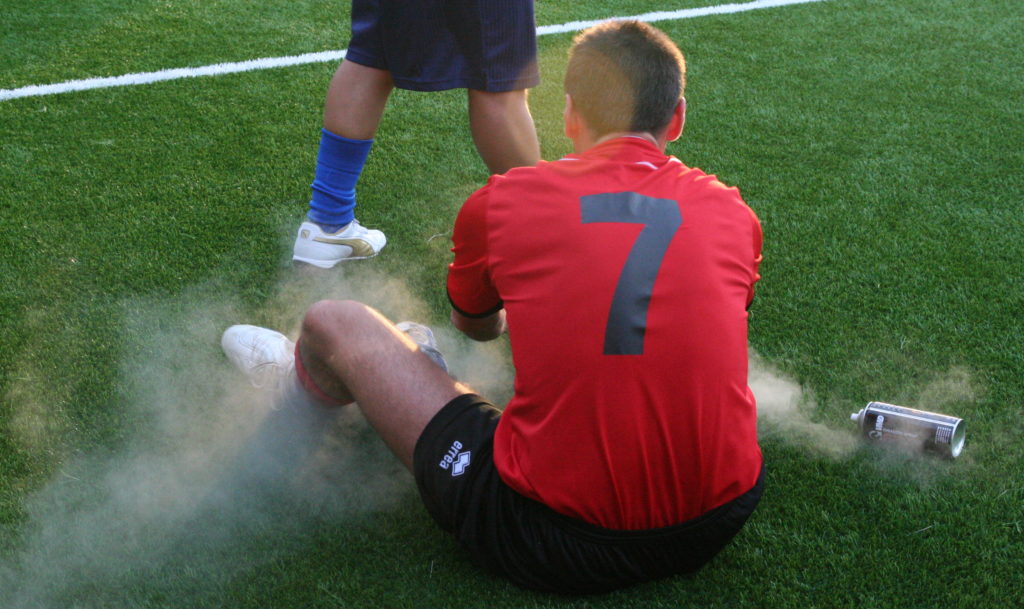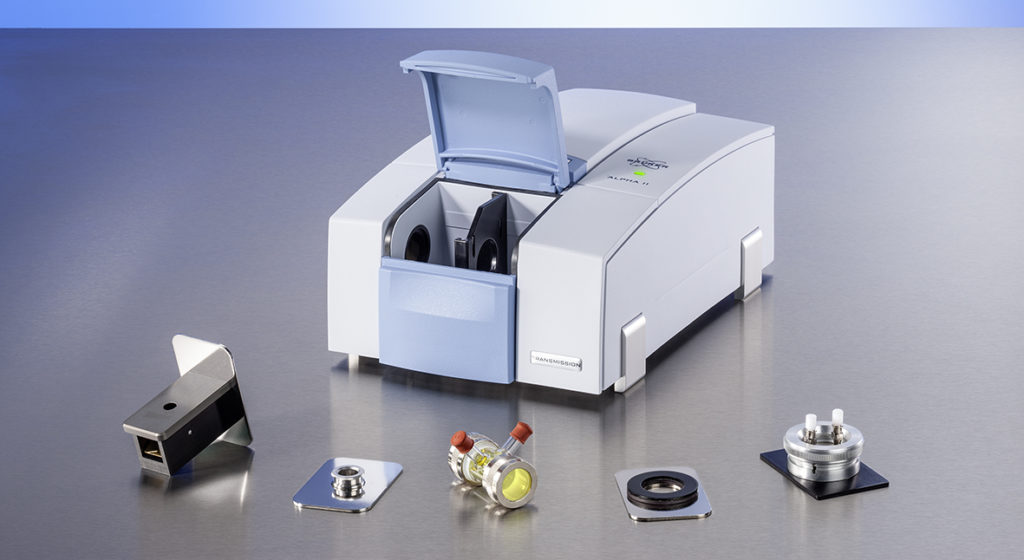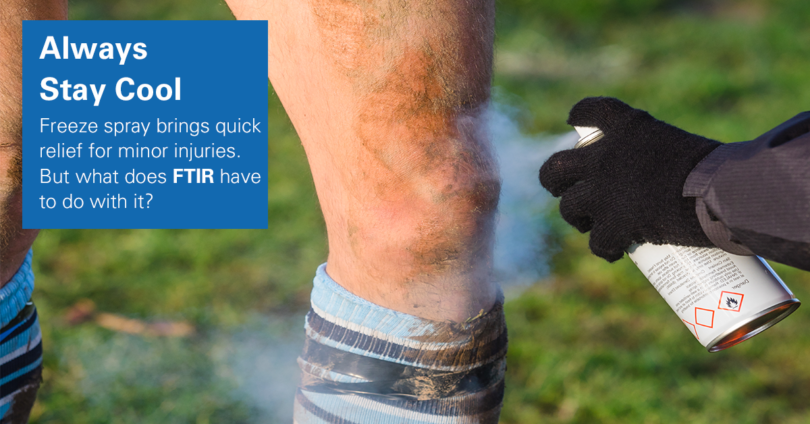If you watch sports (e.g. football) on television or online, you have certainly seen freeze spray before. An eager defender slides desperately against the ball, and the opposing striker lands on the ground and crouches in pain demonstrating his or her injury.
But don’t worry, the freeze spray will save the day – and the game! The first-aid aerosol, simply called „Magic Spray“ by many athletes, is becoming more and more popular. Even if it is not a cure-all and should only be used by experienced sports physicians, it provides many athletes with quick relief from minor injuries.

What’s in this can of frozen relief?
There are different types of freezing sprays for medical applications. Cryotherapy relieves pain and swelling after soft tissue damage by cooling the injured body part.
Some sprays release camphor or menthol through an aerosol propellant such as propane, n-butane and isobutane. Others contain tetrafluoroethane or dimethyl ether. However, chlorethane is most commonly used to treat injuries in professional sports.
The boiling liquid is sprayed onto the skin, absorbs its heat, evaporates and thus produces an intensive and rapid cooling. The big advantage of chlorethane? Since the boiling point is far above the freezing point of water, there is no risk of frostbite.
Where does FTIR come into play?

As soon as products are intended for medical use, the highest quality standards are required. This is why the FTIR spectrometer ALPHA II is used to verify the identity of the chloroethane supply before it is further processed.
A special transmission gas cell is filled with a short spray of chloroethane and measured in less than one minute. Afterwards the transmission cell is quickly vented and immediately ready for the next measurement!
You want to know more? Keep reading on our blog or take a look at our website!








